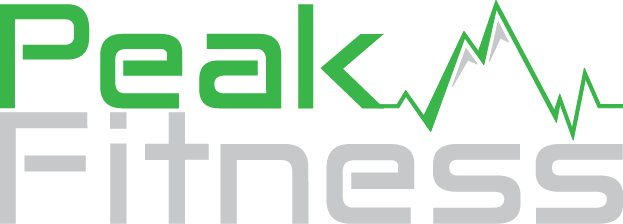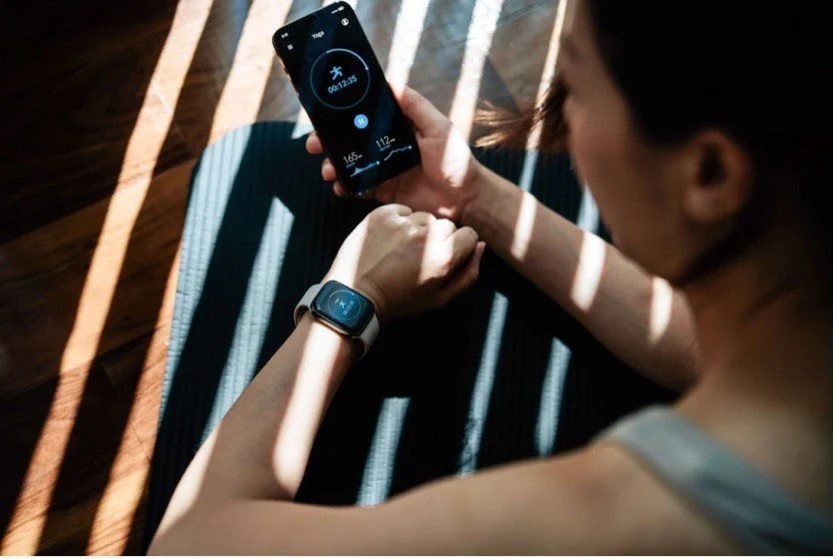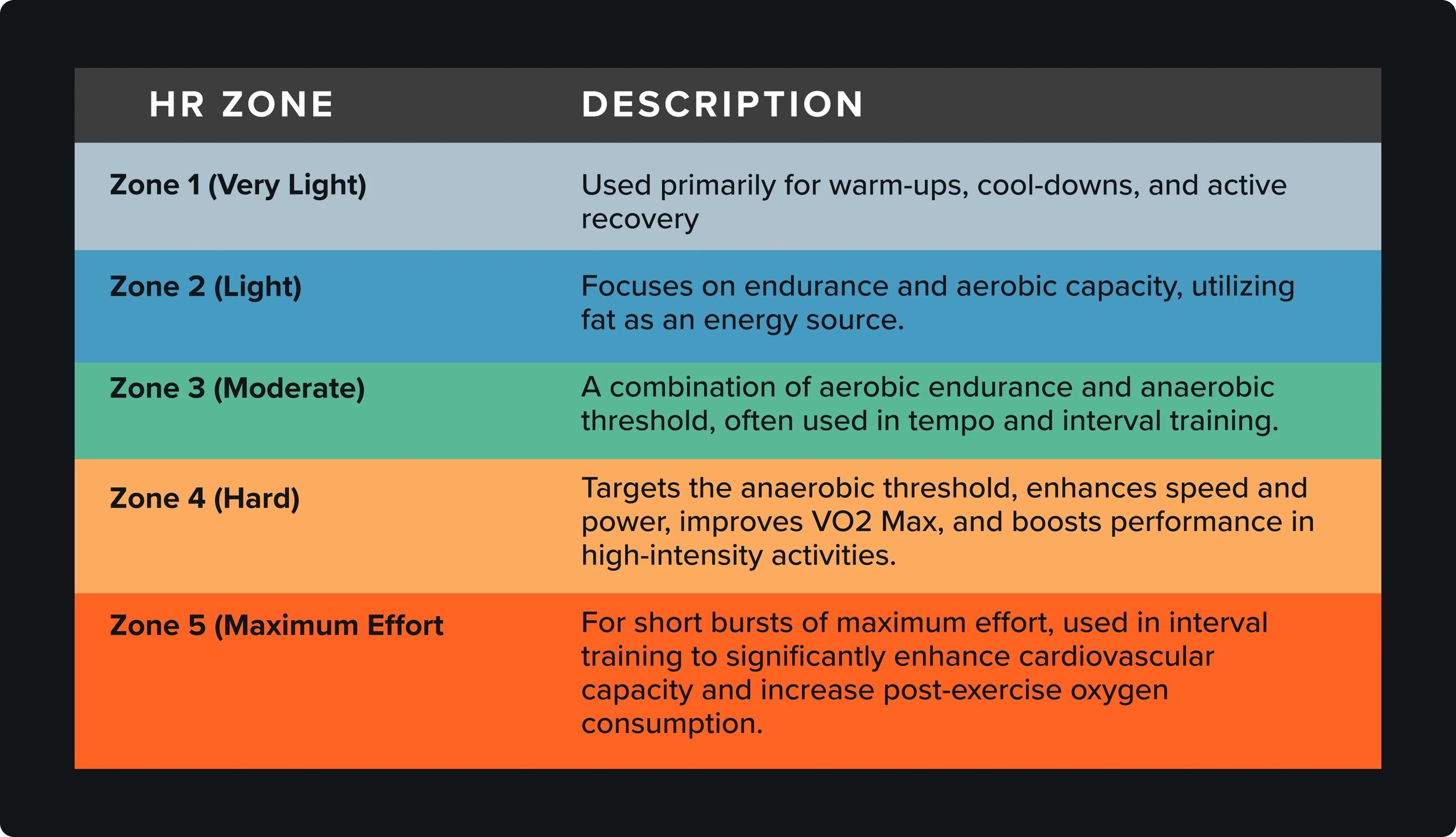Maximizing Your Smartwatch for Smarter Fitness: Part One - VO2 Max
In the age of wearable technology, smartwatches have transformed from trendy accessories into essential fitness tools. Yet, despite their sophisticated features, most users focus only on surface-level metrics like… calories burned, steps taken, or peak heart rate during workouts. While these numbers might feel satisfying to share on social media, they often miss the real power of these devices. The true potential of your smartwatch lies in using its data systematically to enhance your health, fitness, and performance.
This post will show you how to go beyond the basics and use your smartwatch intelligently to improve one of the most critical metrics for your fitness and longevity: VO2 Max. We’ll explain what VO2 Max is, why it matters, and how you can train to improve it using your smartwatch. Along the way, we’ll dive into why chasing vanity metrics is shortsighted and how shifting your focus to meaningful progress can lead to real, measurable results.
By the end of this guide, you’ll have a clear understanding of how to maximize your smartwatch as a tool for smarter fitness, and a better, healthier you.
The Problem with Vanity Metrics
Smartwatches offer an array of flashy statistics, such as calories burned, maximum heart rate, and daily step counts. These metrics, while motivating, are often misunderstood or overemphasized.
Calorie Burn and the Fat-Burning Zone
The "fat-burning zone," or Zone 2 training (roughly 60–70% of your maximum heart rate), is a common target for those looking to lose weight. Many equate a high-calorie burn or a high heart rate with a more effective workout. But here’s the catch: high-calorie burn and an elevated heart rate during exercise don’t always translate to long-term fitness gains. Why?
Calories Burned Are Context-Dependent: A workout that burns 500 calories may seem impressive, but those calories represent a short-term energy expenditure. Without addressing other aspects of your fitness, such as cardiovascular efficiency or recovery, that high-calorie workout won't necessarily make you fitter or healthier.
Heart Rate Spikes Are Not Always Productive: A high heart rate indicates effort, but it doesn’t always reflect meaningful improvement. For example, a heart rate spike during strength training or a short burst of activity doesn't improve your aerobic capacity the same way steady Zone 2 work does.
Sustainability Matters: Zone 2 training, known as the fat-burning zone, helps build a solid aerobic foundation. It burns fat more efficiently and enhances mitochondrial function, which improves overall energy production. High-intensity workouts, while effective for calorie burn, can lead to fatigue and overtraining when done excessively.
The takeaway? Instead of focusing solely on calorie burn or heart rate peaks, use your smartwatch to monitor metrics that support long-term fitness and health, like VO2 Max.
What Is VO2 Max, and Why Should You Care?
VO2 Max is a measure of your body’s ability to consume and utilize oxygen during exercise. It’s widely regarded as one of the best indicators of cardiovascular fitness. The higher your VO2 Max, the more efficiently your heart, lungs, and muscles work together to sustain activity.
Why VO2 Max Matters
Longevity and Health: Studies show a strong correlation between a higher VO2 Max and reduced risk of chronic diseases and all-cause mortality. In simpler terms, a higher VO2 Max often means a longer, healthier life.
Performance Enhancement: Whether you’re a weekend warrior or a competitive athlete, improving VO2 Max boosts endurance and performance across all activities, from running and cycling to recreational sports.
Stress Management: A well-trained aerobic system (reflected in a high VO2 Max) helps your body handle stress more effectively. You’ll recover faster from workouts and be better equipped to handle daily life’s physical and mental demands.
How Your Smartwatch Can Help You Improve VO2 Max
Modern smartwatches come equipped with tools that go beyond basic metrics. Here’s how to leverage these features for smarter, more effective training:
Heart Rate Zones: Most smartwatches can calculate your heart rate zones based on your maximum heart rate. Use these zones to structure your training and ensure you’re working at the right intensity for your goals.
Zone 1 (Easy): 50–60% of HRmax
Zone 2 (Fat-Burning Zone): 60–70% of HRmax
Zone 3 (Moderate): 70–85% of HRmax
Zone 4 (High Intensity): 85–95% of HRmax
Zone 5 (Maximum Effort): 95–100% of HRmax
VO2 Max Estimates: Some smartwatches, such as those from Garmin, Apple, and Fitbit, provide VO2 Max estimates. These numbers are calculated based on your heart rate and activity levels during exercise. While not as accurate as a lab test, they offer valuable trends over time.
Recovery Metrics: Use features like Heart Rate Variability (HRV) and recovery scores to gauge how well your body is recovering from training. Overtraining can lead to diminishing returns, so these metrics are crucial for balancing effort and rest.
Training Load and Progression: Many devices track your training load—a measure of how much stress your workouts place on your body. By balancing high-intensity and low-intensity sessions, you can optimize your training for VO2 Max improvement.
Why Zone 2 Training Is Your Secret Weapon
Zone 2 training is often overlooked in favor of high-intensity workouts, but it’s a cornerstone of improving VO2 Max and overall fitness.
Benefits of Zone 2 Training
Builds Aerobic Base: Strengthens your heart and improves stroke volume (how much blood your heart pumps per beat).
Enhances Fat Metabolism: Encourages your body to use fat as a fuel source, which is critical for endurance.
Supports Recovery: Low-intensity exercise improves blood flow and promotes recovery without adding stress.
Improves Mitochondrial Health: Boosts the efficiency and number of mitochondria, the "powerhouses" of your cells.
A Smarter Approach to Training: The 80/20 Rule
The 80/20 rule, used by elite athletes and recommended by sports scientists. Dictates that 80% of your training should be low intensity (Zones 1 and 2), and 20% should be high intensity (Zones 3–5). This balance optimizes both cardiovascular health and performance.
Sample Smartwatch-Focused Training Plan
Here’s how to structure a week of training using your smartwatch:
Day 1 (Zone 1 Recovery):
30 minutes of walking or cycling at 50–60% HRmax.
Keep it light and conversational.
Day 2 (Zone 2 Endurance):
45 minutes of steady-state cycling, jogging, or brisk walking at 60–70% HRmax.
Use your smartwatch to monitor and maintain your heart rate.
Day 3 (Active Recovery):
Light yoga or stretching. Check HRV to ensure recovery readiness.
Day 4 (Zone 3 Intervals):
4 x 3-minute intervals at 70–85% HRmax, with 2-minute recovery periods.
Use interval timers on your smartwatch to track effort and rest.
Day 5 (Zone 2):
60 minutes of steady-state activity, such as swimming or hiking, at 60–70% HRmax.
Day 6 (High-Intensity Training):
6 x 1-minute sprints at 85–95% HRmax, with 2-minute recovery.
Focus on maintaining effort during each interval.
Day 7 (Rest or Recovery):
Use recovery metrics to decide whether to rest or do light activity.
Moving Beyond the Basics: Using Data Intelligently
To maximize your smartwatch’s potential, shift from a reactive approach (e.g., chasing calorie burn) to a proactive strategy. Use the data systematically to:
Set Goals: Focus on improving VO2 Max, increasing time in Zone 2, or balancing training load.
Track Trends: Monitor your progress over weeks and months, not just single workouts.
Adjust as Needed: If recovery metrics suggest fatigue, dial back intensity or add more rest.
Why a High Calorie Burn Isn’t the Whole Picture
While it’s tempting to equate calorie burn with workout effectiveness, it’s not the best measure of fitness progress. High-calorie workouts often come at the cost of overtraining and poor recovery. Instead, focus on improving metrics like VO2 Max, which reflects your body’s ability to sustain effort over time.
Smarter Fitness Starts with Smarter Tools
Your smartwatch is more than a step counter or a calorie tracker, it’s a gateway to smarter, more effective fitness. By understanding and leveraging its advanced features, you can shift your focus from superficial metrics to meaningful progress. Prioritize VO2 Max, embrace the 80/20 rule, and balance your training for long-term health and performance.
Ready to make the most of your smartwatch? The key isn’t just wearing it, it’s using it to guide a smarter, more strategic approach to fitness.





